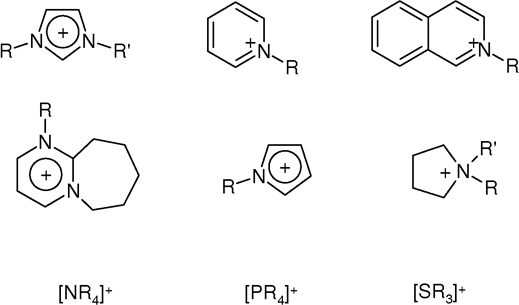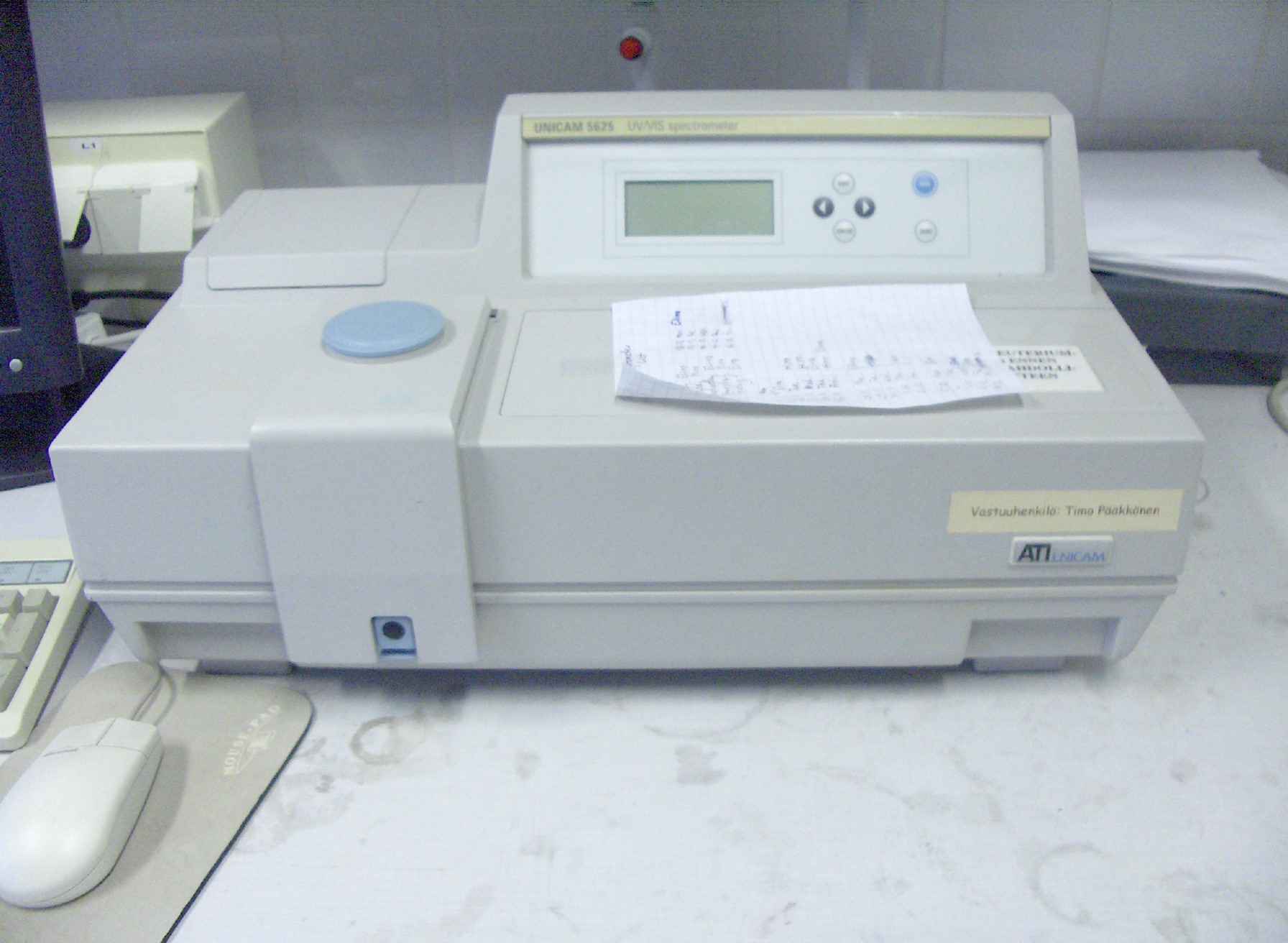|
Hexafluorophosphate
Hexafluorophosphate is an anion with chemical formula of . It is an octahedral species that imparts no color to its salts. is isoelectronic with sulfur hexafluoride, , and the hexafluorosilicate dianion, , and hexafluoroantimonate . In this anion, phosphorus has a valence of 5. Being poorly nucleophilic, hexafluorophosphate is classified as a non-coordinating anion. Synthesis Hexafluorophosphate salts can be prepared by the reaction of phosphorus pentachloride and alkali or ammonium halide in a solution of hydrofluoric acid: : Hexafluorophosphoric acid can be prepared by direct reaction of hydrogen fluoride with phosphorus pentafluoride. It is a strong Brønsted acid that is typically generated ''in situ'' immediately before its use. : These reactions require specialized equipment to safely handle the hazards associated with hydrofluoric acid and hydrogen fluoride. Quantitative analysis Several methods of quantitative analysis for the hexafluorophosphate ion have b ... [...More Info...] [...Related Items...] OR: [Wikipedia] [Google] [Baidu] |
Ferrocenium Hexafluorophosphate
Ferrocenium hexafluorophosphate is an organometallic compound with the formula e(C5H5)2F6. This salt is composed of the cation e(C5H5)2sup>+ and the hexafluorophosphate anion (). The related tetrafluoroborate is also a popular reagent with similar properties. The cation is often abbreviated Fc+ or Cp2Fe+. The salt is deep blue in color and paramagnetic. Ferrocenium salts are one-electron oxidizing agents, and the reduced product, ferrocene, is relatively inert and readily separated from ionic products. The ferrocene–ferrocenium couple is often used as a reference in electrochemistry. In acetonitrile solution that is 0.1 M in NBu4PF6, the Fc+/Fc couple is +0.641 V with respect to the normal hydrogen electrode. Preparation and structure Commercially available, this compound may be prepared by oxidizing ferrocene with ferric salts followed by addition of hexafluorophosphoric acid. The compound is monoclinic with well-separated cation and anion; the may rotate f ... [...More Info...] [...Related Items...] OR: [Wikipedia] [Google] [Baidu] |
Hexafluorophosphoric Acid
Hexafluorophosphoric acid is the inorganic compound with the chemical formula (also written ). This strong Brønsted acid features a non-coordinating anion, hexafluorophosphate (). It is formed from the reaction of hydrogen fluoride with phosphorus pentafluoride. Like many strong acids, hexafluorophosphoric acid is not isolable but is handled only in solution. It exothermically reacts with water to produce oxonium hexafluorophosphate () and hydrofluoric acid. Additionally, such solutions often contain products derived from hydrolysis of the P-F bonds, including , , and , and their conjugate bases. Hexafluorophosphoric acid attacks glass. Upon heating, it decomposes to generate HF. Crystalline has been obtained as the hexahydrate, wherein is enclosed in truncated octahedral cages defined by the water and protons. NMR spectroscopy indicates that solutions derived from this hexahydrate contain significant amounts of HF. See also * Fluoroantimonic acid Fluoroantimonic acid ... [...More Info...] [...Related Items...] OR: [Wikipedia] [Google] [Baidu] |
Non-coordinating Anion
Anions that interact weakly with cations are termed non-coordinating anions, although a more accurate term is weakly coordinating anion. Non-coordinating anions are useful in studying the reactivity of electrophilic cations. They are commonly found as counterions for cationic metal complexes with an unsaturated coordination sphere. These special anions are essential components of homogeneous alkene polymerisation catalysts, where the active catalyst is a coordinatively unsaturated, cationic transition metal complex. For example, they are employed as counterions for the 14 valence electron cations C5H5)2ZrRsup>+ (R = methyl or a growing polyethylene chain). Complexes derived from non-coordinating anions have been used to catalyze hydrogenation, hydrosilylation, oligomerization, and the living polymerization of alkenes. The popularization of non-coordinating anions has contributed to increased understanding of agostic complexes wherein hydrocarbons and hydrogen serve as ligands. ... [...More Info...] [...Related Items...] OR: [Wikipedia] [Google] [Baidu] |
Ionic Liquid
An ionic liquid (IL) is a salt in the liquid state. In some contexts, the term has been restricted to salts whose melting point is below a specific temperature, such as . While ordinary liquids such as water and gasoline are predominantly made of electrically neutral molecules, ionic liquids are largely made of ions. These substances are variously called liquid electrolytes, ionic melts, ionic fluids, fused salts, liquid salts, or ionic glasses. Ionic liquids have many potential applications. They are powerful solvents and can be used as electrolytes. Salts that are liquid at near-ambient temperature are important for electric battery applications, and have been considered as sealants due to their very low vapor pressure. Any salt that melts without decomposing or vaporizing usually yields an ionic liquid. Sodium chloride (NaCl), for example, melts at into a liquid that consists largely of sodium cations () and chloride anions (). Conversely, when an ionic liquid is cooled, ... [...More Info...] [...Related Items...] OR: [Wikipedia] [Google] [Baidu] |
Fluoroanion
In chemistry, a fluoroanion or fluorometallate anion is a polyatomic anion that contains one or more fluorine atoms. The ions and salts form from them are also known as complex fluorides. They can occur in salts, or in solution, but seldom as pure acids. Fluoroanions often contain elements in higher oxidation states. They mostly can be considered as fluorometallates, which are a subclass of halometallates. The following is a list of fluoroanions in atomic number order. * trifluoroberyllate * tetrafluoroberyllate *tetrafluoroborate * magnesium tetrafluoride * tetrafluoroaluminate * hexafluoroaluminate *hexafluorosilicate *hexafluorophosphate * Sulfur trifluoride anion * pentafluorosulfate aka pentafluorosulfite or Sulfur pentafluoride ion * sulfur pentafluoride anion * tetrafluorochlorate * hexafluorotitanate * hexafluorovanadate(III) * hexafluorovanadate(IV) * hexafluorovanadate(V) * trifluoromanganate * hexafluoromanganate(III) * hexafluoromanganate(IV) * heptafluoromanganate ... [...More Info...] [...Related Items...] OR: [Wikipedia] [Google] [Baidu] |
Titration
Titration (also known as titrimetry and volumetric analysis) is a common laboratory method of quantitative chemical analysis to determine the concentration of an identified analyte (a substance to be analyzed). A reagent, termed the ''titrant'' or ''titrator'', is prepared as a standard solution of known concentration and volume. The titrant reacts with a solution of ''analyte'' (which may also be termed the ''titrand'') to determine the analyte's concentration. The volume of titrant that reacted with the analyte is termed the ''titration volume''. History and etymology The word "titration" descends from the French word ''titrer'' (1543), meaning the proportion of gold or silver in coins or in works of gold or silver; i.e., a measure of fineness or purity. ''Tiltre'' became ''titre'', which thus came to mean the "fineness of alloyed gold", and then the "concentration of a substance in a given sample". In 1828, the French chemist Joseph Louis Gay-Lussac first used ''titre'' as ... [...More Info...] [...Related Items...] OR: [Wikipedia] [Google] [Baidu] |
Analytical Chemistry (journal)
''Analytical Chemistry'' is a biweekly peer-reviewed scientific journal published since 1929 by the American Chemical Society. Articles address general principles of chemical measurement science and novel analytical methodologies. Topics commonly include chemical reactions and selectivity, chemometrics and data processing, electrochemistry, elemental and molecular characterization, imaging, instrumentation, mass spectrometry, microscale and nanoscale systems, -omics, sensing, separations, spectroscopy, and surface analysis. It is abstracted and indexed in Chemical Abstracts Service, CAB International, EBSCOhost, ProQuest, PubMed, Scopus, and the Science Citation Index Expanded. According to the ''Journal Citation Reports'', it has a 2020 impact factor of 6.986 . The editor-in-chief is Jonathan V. Sweedler (University of Illinois). See also * List of chemistry journals References External links * {{DEFAULTSORT:Analytical Chemistry (Journal) Analytical Chemistry Analyti ... [...More Info...] [...Related Items...] OR: [Wikipedia] [Google] [Baidu] |
Gravimetric Analysis
Gravimetric analysis describes a set of methods used in analytical chemistry for the quantitative determination of an analyte (the ion being analyzed) based on its mass. The principle of this type of analysis is that once an ion's mass has been determined as a unique compound, that known measurement can then be used to determine the same analyte's mass in a mixture, as long as the relative quantities of the other constituents are known. The four main types of this method of analysis are ''precipitation'', ''volatilization'', ''electro-analytical'' and ''miscellaneous physical method''. The methods involve changing the phase of the analyte to separate it in its pure form from the original mixture and are quantitative measurements. Precipitation method The precipitation method is the one used for the determination of the amount of calcium in water. Using this method, an excess of oxalic acid, H2C2O4, is added to a measured, known volume of water. By adding a reagent, here ammoni ... [...More Info...] [...Related Items...] OR: [Wikipedia] [Google] [Baidu] |
Spectrophotometry
Spectrophotometry is a branch of electromagnetic spectroscopy concerned with the quantitative measurement of the reflection or transmission properties of a material as a function of wavelength. Spectrophotometry uses photometers, known as spectrophotometers, that can measure the intensity of a light beam at different wavelengths. Although spectrophotometry is most commonly applied to ultraviolet, visible, and infrared radiation, modern spectrophotometers can interrogate wide swaths of the electromagnetic spectrum, including x-ray, ultraviolet, visible, infrared, and/or microwave wavelengths. Overview Spectrophotometry is a tool that hinges on the quantitative analysis of molecules depending on how much light is absorbed by colored compounds. Important features of spectrophotometers are spectral bandwidth (the range of colors it can transmit through the test sample), the percentage of sample-transmission, the logarithmic range of sample-absorption, and sometimes a percen ... [...More Info...] [...Related Items...] OR: [Wikipedia] [Google] [Baidu] |
Ferroin
Ferroin is the chemical compound with the formula e(''o''-phen)3O4, where ''o''-phen is an abbreviation for 1,10-phenanthroline, a bidentate ligand. The term "ferroin" is used loosely and includes salts of other anions such as chloride. Redox indicator This coordination compound is used as an indicator in analytical chemistry. The active ingredient is the e(''o''-phen)3sup>2+ ion, which is a chromophore that can be oxidized to the ferric derivative e(''o''-phen)3sup>3+. The potential for this redox change is +1.06 volts in 1 M H2SO4. It is a popular redox indicator for visualizing oscillatory Belousov–Zhabotinsky reactions. Ferroin is suitable as a redox indicator, as the color change is reversible, very pronounced and rapid, and the ferroin solution is stable up to 60 °C. It is the main indicator used in cerimetry.{{cite book, title=Handbook on the Physics and Chemistry of Rare Earths, url=https://books.google.com/books?id=_Ro3Fqtz4xgC&pg=PA289, date= 2006, ... [...More Info...] [...Related Items...] OR: [Wikipedia] [Google] [Baidu] |
In Situ
''In situ'' (; often not italicized in English) is a Latin phrase that translates literally to "on site" or "in position." It can mean "locally", "on site", "on the premises", or "in place" to describe where an event takes place and is used in many different contexts. For example, in fields such as physics, geology, chemistry, or biology, ''in situ'' may describe the way a measurement is taken, that is, in the same place the phenomenon is occurring without isolating it from other systems or altering the original conditions of the test. The opposite of ''in situ'' is ''ex situ''. Aerospace In the aerospace industry, equipment on-board aircraft must be tested ''in situ'', or in place, to confirm everything functions properly as a system. Individually, each piece may work but interference from nearby equipment may create unanticipated problems. Special test equipment is available for this ''in situ'' testing. It can also refer to repairs made to the aircraft structure or flight con ... [...More Info...] [...Related Items...] OR: [Wikipedia] [Google] [Baidu] |
Hydrolysis
Hydrolysis (; ) is any chemical reaction in which a molecule of water breaks one or more chemical bonds. The term is used broadly for substitution, elimination, and solvation reactions in which water is the nucleophile. Biological hydrolysis is the cleavage of biomolecules where a water molecule is consumed to effect the separation of a larger molecule into component parts. When a carbohydrate is broken into its component sugar molecules by hydrolysis (e.g., sucrose being broken down into glucose and fructose), this is recognized as saccharification. Hydrolysis reactions can be the reverse of a condensation reaction in which two molecules join into a larger one and eject a water molecule. Thus hydrolysis adds water to break down, whereas condensation builds up by removing water. Types Usually hydrolysis is a chemical process in which a molecule of water is added to a substance. Sometimes this addition causes both the substance and water molecule to split into two parts. ... [...More Info...] [...Related Items...] OR: [Wikipedia] [Google] [Baidu] |

4.png)




